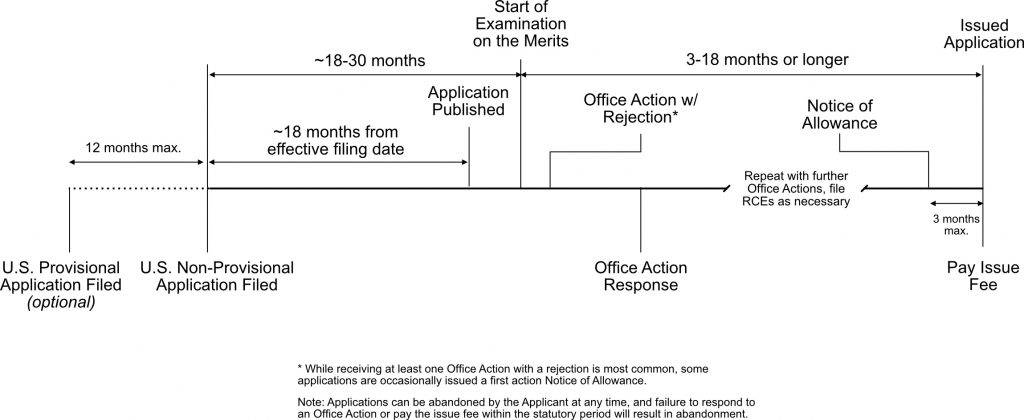To obtain U.S. patent protection for a new and useful process, machine, article of manufacture, or composition of matter—or an improvement to the same—a non-provisional application for a utility patent may be submitted to the United States Patent & Trademark Office (USPTO).
Typically, an applicant waits eighteen to thirty months from the effective filing date for examination of the application. The examiner considers whether the claimed invention is accompanied, inter alia, by sufficient enabling disclosure, is directed to eligible subject matter, is novel, and would not have been obvious to a person having ordinary skill in the art. At this point, it’s common for an application to receive at least one rejection in an office action—a recent study has shown over 80% of applications do, including those eventually allowed

After the applicant and the examiner arrive at an allowable set of claims, and the application is otherwise compliant with the requirements of U.S. patent law, the application may be allowed. The issue fee must then be paid and, if a patent issues, maintenance fees must be paid at regular intervals.
This is a basic, high-level overview of what can be a complicated process with many deadlines and requirements. It’s always best to consult with a qualified patent practitioner having an understanding of the field of your invention.
Bonus fun fact: Patent applications are generally published on Thursdays and patent grants are published on Tuesdays.